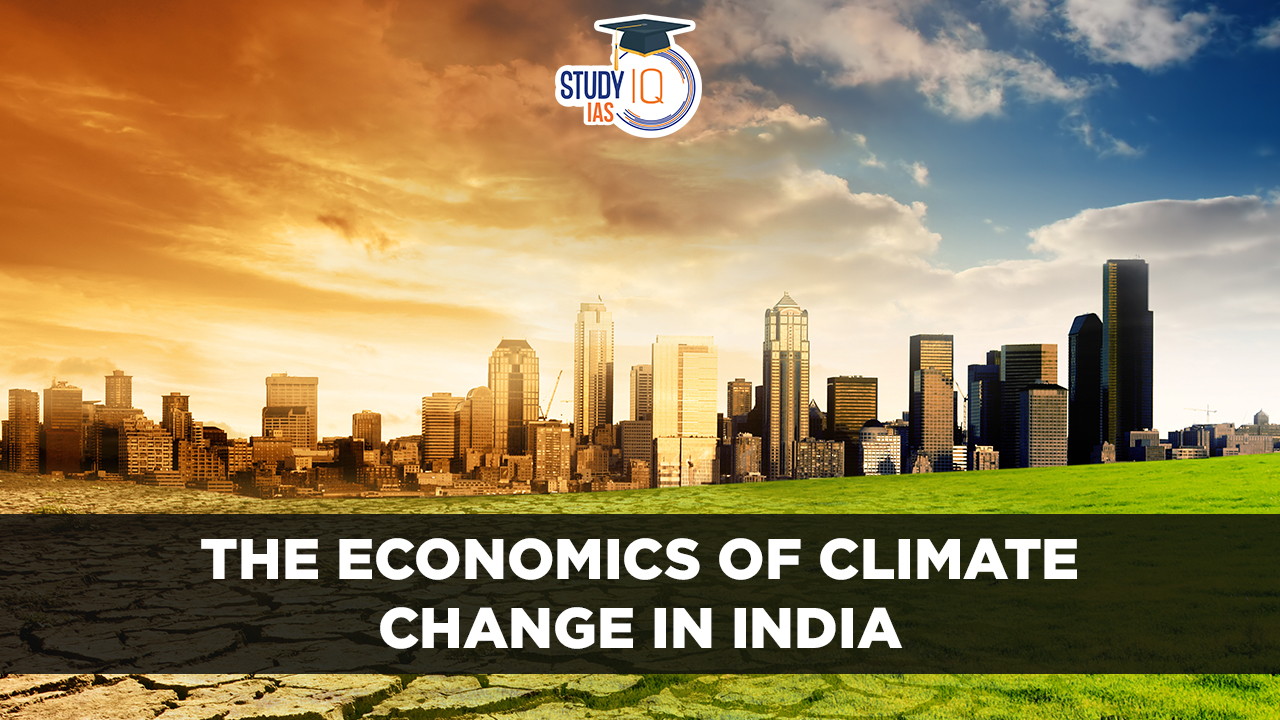Table of Contents
Contest: Reserve Bank of India (RBI)‘s recently published ‘annual report on currency and finance’ includes a chapter explaining climate change’s macroeconomic effects.
What is Climate Change?
- Climate change refers to long-term shifts and alterations in the Earth’s climate patterns, including changes in temperature, precipitation, wind patterns, and other aspects of the climate system.
- It is primarily driven by human activities, particularly the burning of fossil fuels (such as coal, oil, and natural gas), deforestation, and industrial processes, which release greenhouse gases (GHGs) into the atmosphere.
What is the Evidence of Climate Change in India?
- Anomalies in temperature: While annual average temperature in India has been increasing gradually, the rise has been significantly sharper during the last vicennial (twenty years) than during any other 20-year time interval since 1901 finds the RBI report.
- Anomalies in precipitation: Similarly, the southwest monsoon, too, has been becoming more erratic.
- While the average annual rainfall in India increased during 2000-2020 compared to 1960-1999, the long-term trend since 1901 indicates a gradual decline in annual rainfall.
- Moreover, evidence suggests that while dry spells have become more frequent during the last several years, intense wet spells have also increased, finds RBI’s research.
- Natural disasters: Research about natural disasters since 1975 has shown that India is relatively more exposed to floods and storms (i.e., cyclones and hailstorms) than droughts and heatwaves.
How Vulnerable is India to Climate Change?
- The Global Climate Risk Index 2021 had ranked India seventh in the list of most affected countries in terms of exposure and vulnerability to climate risk events.
- There are two ways of analyzing India’s vulnerability to climate change. One by looking at India’s geographical attributes and the other by looking at the structure of India’s economy.
- Geographical features: India’s diverse topography is not only exposed to different temperature and precipitation patterns, but also makes it vulnerable to extreme weather events posing wide-ranging spatial and temporal implications for the economy.
- Economic structure: India’s sectoral composition of GDP is skewed towards services sector, which is globally considered to be emission-light with relatively lower energy intensity of output.
- The services-led growth path since 1980s was associated with a declining trajectory in overall CO2 emissions growth for about twenty years till early 2000s.
- There was a brief episode of acceleration in CO2 emissions growth which took place between 2004-05 to 2009-10, which could be attributed to the spurt in manufacturing activity observed during that period.
- CO2 emissions growth started decelerating around 2011-12 and followed a declining trajectory again during the decade of 2010s.

What is the Macroeconomic Impact of Climate Change on India?
- Climate change can adversely impact both the supply side as well as the demand side. It can stroke inflation, reduce economic output, trigger uncertainty and change consumer behaviour.
- Typically, the risks from climate change are categorized in two main ways.
- Physical risks: These include chronic issues (such as a gradual and sustained change in temperature and precipitation) as well as acute events such as extreme weather occurrences).
- Transition risks: Simply put, these refer to economy-wide changes arising from the transition towards a low-carbon economy.
- This is best encapsulated by a paradox called “success is failure”. This phrase was used by Mark Carney, Governor of the Bank of England, in 2016.
- Carney meant that if the shift towards becoming a low-carbon economy is too rapid, it could materially damage a country’s financial stability.

- Over the years, there have been several predictions and assessments made about the impact of climate change on India’s economy. Some are listed below:
- According to NITI Aayog in 2019, around 600 million of India’s population are facing severe water stress, with 8 million children below 14 years in urban India at risk due to poor water supply.
- The World Bank in 2020 said that India could account for 34 million of the projected 80 million global job losses from heat stress associated productivity decline by 2030.
- The IPCC Working Group in 2022 stated that India is one of the most vulnerable countries globally in terms of the population that would be affected by the sea level rise. By the middle of the present century, around 35 million people in India could face annual coastal flooding, with 45-50 million at risk by the end of the century.
Can policies provide some solutions?
- The Network of Central Banks and Supervisors for Greening the Financial System (NGFS) have created an analytical framework called the National Institute Global Econometric Model (NIGEM) “to produce policy insights”.
- In this model, the researchers looked at how GDP growth rate and inflation would be affected under six different policy stances when compared to the baseline (which is the best-case scenario involving no impact of climate change). Details of the six policy stances are shown in the image.
- Impact on GDP: The report said that policy actions have a negative impact on India’s GDP no matter what. However, global scenarios of “current policies” and “nationally determined contributions (or NDCs)” have the highest negative impact on output, whereas rapidly moving towards Net Zero by 2050 will contain the hit to GDP.
- Impact on inflation: Moving towards net zero by 2050 will spike inflation far more in the immediate future than continuing on current policies.
- Overall, these trade-offs will become sharper as India tries to achieve the twin goals of achieving net zero emissions by 2070 and becoming an advanced economy (which implies higher emissions) by 2047.



 List of Governor of States in India, Con...
List of Governor of States in India, Con...
 Daily Quiz 15 July 2025
Daily Quiz 15 July 2025
 Maratha Military Landscapes of India Add...
Maratha Military Landscapes of India Add...





















